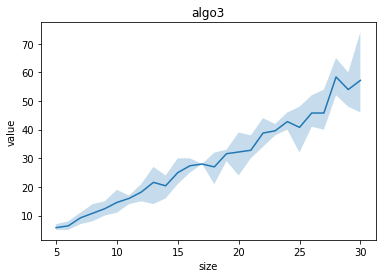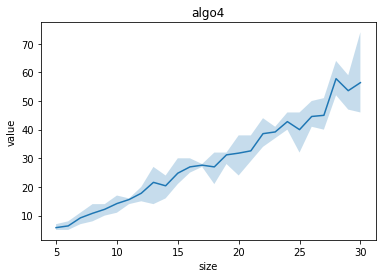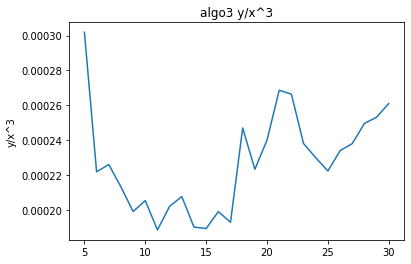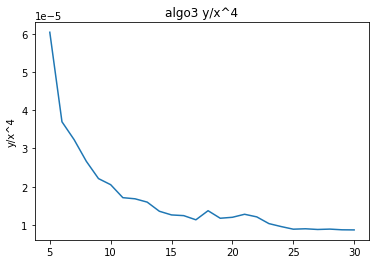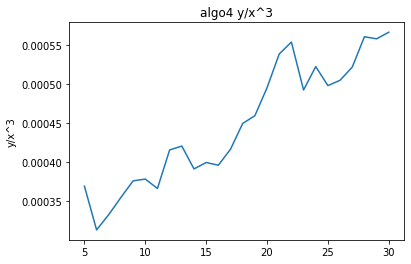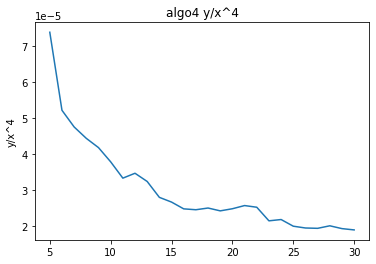Le problème des mariages stables est au cœur de nombreuses procédures d'affectation, la plus connue en France étant probablement ParcourSup. Il y a dans ce problème deux types de joueurs (hommes/femmes, candidat(e)s/universités, ...), chaque joueur d'un type donnant ses préférences sur les joueurs de l'autre type (les universités classent les candidat(e)s par exemple). Le but est de trouver une affectation/un couplage vérifiant une propriété de stabilité. L'algorithme le plus connu pour trouver une telle affectation est l'algorithme de Gale-Shapley. Nous nous intéressons dans ce projet non seulement coder les solutions en algorithme de Gale-Shapley et programmation linéaire, mais aussi étudier ce problème dans une situation dynamique : à chaque pas de temps nous réinitialise le nombre de l’homme et femme et on va trouvé une algorithme qui minimiser le changement de couples.
- Gale-shapley (algo 1,2)
- Iteratif linear programmation
- Global linear programmation
- name_female.json, name_femal.json / csv : data of humans' name
- get_csv.py : turn files from json to csv
- gs.py : principal code of algorithmes Gale-shapley
- sm.py : principal file contains functions:
- gennere_set_f_m
- genere_pref_dyn
- genere_instance
- calcul_difference_entre_gen
- algo_1
- algo_2
- lire_entree
- choix_algo
- moplex.py, moplex_new.py : application of linear programmtion
- algo3.py : contains the function for the Iteratif linear programmation
- algo4.py : contains the function for the Global linear programmation
- interface.py : contains code for the interface
Objet : we want to study the value and time-cost evolution for these four algorithmes in a specifique situation
Situation : number male->max, number female from 1 to max
%load_ext autoreload
%autoreload 2import os
#if you want to know current working dir
os.getcwd()
#if you want to change
os.chdir('/Users/xinyuhuangmac/Google Drive/M1S2/Projet/Projet_SM')
# if you want to list dir
os.listdir()['mogplex_new.py',
'name_male.json',
'.DS_Store',
'study_test.py',
'results.ipynb',
'interface.py',
'mogplex.py',
'trash',
'algo3.py',
'__pycache__',
'sm.py',
'test.py',
'name_male.csv',
'algo4.py',
'gs.py',
'donne.csv',
'.ipynb_checkpoints',
'name_female.json',
'.git',
'error.txt',
'main.py',
'name_female.csv',
't.py',
'model.ilp',
'get_csv.py']
import os
from sm import *
import random
import time
import matplotlib.pyplot as pltsize_K=30
size_S=30
lt1,lt2,lt3,lt4=[],[],[],[]
lv1,lv2,lv3,lv4=[],[],[],[]
nb_for_generation=5
for i in range(5,(size_S+1)):
K=[i]*i
S=[j for j in range(1,i+1)]
t=[0]*4
sl1, sl2, sl3 ,sl4 = [], [], [], []
import sys
save_stdout = sys.stdout
sys.stdout = open('trash', 'w')
for j in range(nb_for_generation):
female,male,s_f,s_m=gennere_set_f_m(i,i)
ins=genere_instance(K,S, male, female, s_m, s_f)
start = time.time()
res1=calcul_difference_entre_gen(algo_1(deepcopy(ins)))
stop = time.time()
t[0]+=stop-start
start = time.time()
res2=calcul_difference_entre_gen(algo_2(deepcopy(ins)))
stop = time.time()
t[1]+=stop-start
start = time.time()
res3=calcul_difference_entre_gen(algo_3(deepcopy(ins)))
stop = time.time()
t[2]+=stop-start
start = time.time()
res4=prog_lineaire_advance(deepcopy(ins))
stop = time.time()
t[3]+=stop-start
sl1.append(res1)
sl2.append(res2)
sl3.append(res3)
sl4.append(res4)
if res4>res3:
print("!!!!!!!!!!!!!!!!!Erreur!!!!!!!!!!!!!!!!!")
sys.stdout = save_stdout
print("i==",i)
lv1.append(sl1)
lv2.append(sl2)
lv3.append(sl3)
lv4.append(sl4)
lt1.append(np.mean(t[0]))
lt2.append(np.mean(t[1]))
lt3.append(np.mean(t[2]))
lt4.append(np.mean(t[3]))
"""
1. codes utilisables (commente, readme, facilise pour l'utilisation->interface)
2. test
n = 4
homme=max femme=range(1,max)
1) temps de calcul en fonction de n (courbe temps de calcul)
2) valeurs des algorithme alg1/alg4 .....
- moyenne, pire cas, courbeen fonction de n
3) ALGO4:
xijt en reel ->relaxation continue
18 mai/23,24 mai
"""i== 5
i== 6
i== 7
i== 8
i== 9
i== 10
i== 11
i== 12
i== 13
i== 14
i== 15
i== 16
i== 17
i== 18
i== 19
i== 20
i== 21
i== 22
i== 23
i== 24
i== 25
i== 26
i== 27
i== 28
i== 29
i== 30
"\n1. codes utilisables (commente, readme, facilise pour l'utilisation->interface)\n2. test\n n = 4\n homme=max femme=range(1,max)\n 1) temps de calcul en fonction de n (courbe temps de calcul)\n 2) valeurs des algorithme alg1/alg4 .....\n - moyenne, pire cas, courbeen fonction de n\n 3) ALGO4:\n xijt en reel ->relaxation continue\n\n 18 mai/23,24 mai\n"
Lg=[i for i in range(5,(size_S+1))]
plt.plot(Lg,lt1, label="algo1")
plt.plot(Lg,lt2, label="algo2")
plt.plot(Lg,lt3, label="algo3")
plt.plot(Lg,lt4, label="algo4")
plt.legend()
plt.show()plt.plot(Lg,np.mean(lv1,axis=1), label="algo1")
plt.plot(Lg,np.mean(lv2,axis=1), label="algo2")
plt.plot(Lg,np.mean(lv3,axis=1), label="algo3")
plt.plot(Lg,np.mean(lv4,axis=1), label="algo4")
plt.legend()
plt.show()print(lv3)
print(lv2)
print(lv4)[[6, 5, 6, 6, 7], [6, 6, 8, 10, 7], [11, 8, 13, 7, 10], [13, 15, 10, 11, 8], [14, 11, 11, 15, 10], [10, 17, 12, 13, 17], [18, 17, 18, 15, 20], [19, 20, 18, 19, 18], [18, 20, 22, 17, 21], [23, 29, 26, 25, 23], [26, 21, 19, 28, 24], [23, 33, 23, 21, 22], [27, 25, 25, 43, 19], [26, 35, 35, 27, 33], [21, 34, 28, 23, 31], [29, 34, 33, 31, 25], [34, 30, 40, 27, 31], [45, 39, 41, 36, 45], [41, 41, 38, 42, 26], [38, 48, 47, 46, 37], [44, 41, 38, 31, 47], [43, 48, 38, 46, 47], [47, 39, 52, 52, 55], [48, 45, 46, 49, 56], [54, 48, 49, 61, 38], [70, 48, 62, 61, 60]]
[[6, 5, 6, 6, 7], [6, 6, 8, 10, 7], [11, 8, 13, 7, 10], [13, 15, 10, 11, 8], [14, 11, 11, 15, 10], [10, 17, 12, 13, 17], [18, 17, 18, 15, 20], [19, 20, 18, 19, 18], [18, 20, 22, 17, 21], [23, 29, 26, 25, 23], [26, 21, 19, 28, 24], [23, 33, 23, 21, 22], [27, 25, 25, 43, 19], [26, 35, 35, 27, 33], [21, 34, 28, 23, 31], [29, 34, 33, 31, 25], [34, 30, 40, 27, 31], [45, 39, 41, 36, 45], [41, 41, 38, 42, 26], [38, 48, 47, 46, 37], [44, 41, 38, 31, 47], [43, 48, 38, 46, 47], [47, 39, 52, 52, 55], [48, 45, 46, 49, 56], [54, 48, 49, 61, 38], [70, 48, 62, 61, 60]]
[[6, 5, 6, 6, 7], [6, 6, 8, 10, 7], [11, 8, 13, 7, 10], [13, 14, 10, 11, 8], [14, 11, 10, 15, 10], [10, 16, 12, 13, 17], [18, 17, 18, 15, 20], [19, 20, 18, 18, 17], [18, 20, 21, 17, 21], [23, 28, 26, 25, 23], [26, 21, 19, 28, 24], [23, 31, 23, 21, 22], [27, 25, 25, 40, 19], [25, 35, 34, 27, 33], [21, 34, 28, 23, 31], [29, 34, 33, 31, 25], [34, 29, 38, 27, 31], [45, 38, 40, 36, 45], [41, 41, 38, 42, 26], [38, 48, 46, 45, 37], [44, 41, 38, 31, 46], [42, 48, 38, 45, 47], [47, 39, 52, 51, 55], [47, 45, 46, 49, 54], [54, 48, 49, 59, 38], [70, 48, 60, 61, 58]]
nb_algo=1
for l in [lv1, lv2, lv3, lv4]:
max_v=np.max(l,axis=1)
min_v=np.min(l,axis=1)
plt.fill_between(Lg, max_v,min_v, alpha=0.25, linewidth=0,)
plt.plot(Lg,np.mean(l,axis=1))
plt.title("algo"+str(nb_algo))
plt.xlabel("size")
plt.ylabel("value")
plt.show()
nb_algo+=1print(lv3, lv2)[[5, 4, 7, 8, 6], [8, 9, 6, 7, 8], [9, 7, 8, 10, 6], [9, 13, 10, 10, 12], [13, 12, 17, 11, 13], [11, 13, 12, 17, 10], [19, 17, 12, 16, 14], [13, 21, 22, 16, 22], [19, 20, 27, 21, 21], [22, 18, 17, 18, 24], [23, 25, 26, 24, 22], [29, 18, 25, 28, 25], [32, 20, 26, 29, 21], [25, 31, 27, 26, 27], [28, 27, 37, 28, 30], [34, 41, 29, 35, 34]] [[5, 4, 7, 8, 6], [8, 9, 6, 7, 8], [9, 7, 8, 10, 6], [9, 13, 10, 10, 12], [13, 12, 17, 11, 13], [11, 13, 12, 17, 10], [19, 17, 12, 16, 14], [13, 21, 22, 16, 22], [19, 20, 27, 21, 21], [22, 18, 17, 18, 24], [23, 25, 26, 24, 22], [29, 18, 25, 28, 25], [32, 20, 26, 29, 21], [25, 31, 27, 26, 27], [28, 27, 37, 28, 30], [34, 41, 29, 35, 34]]
size_K=20
size_S=20
new_lt=[]
new_lv=[]
nb_for_generation=1
for i in range(5,(size_S+1)):
K=[i]*i
S=[j for j in range(1,i+1)]
t=[]
sl1new=[]
import sys
#save_stdout = sys.stdout
#sys.stdout = open('trash', 'w')
for j in range(nb_for_generation):
female,male,s_f,s_m=gennere_set_f_m(i,i)
ins=genere_instance(K,S, male, female, s_m, s_f)
start = time.time()
res1=calcul_difference_entre_gen(algo_3(deepcopy(ins)))
stop = time.time()
t.append(stop-start)
sl1new.append(res1)
#sys.stdout = save_stdout
print("i==",i)
new_lv.append(sl1new)
new_lt.append(np.mean(t))i== 5
i== 6
i== 7
i== 8
i== 9
i== 10
i== 11
i== 12
i== 13
i== 14
i== 15
i== 16
i== 17
i== 18
i== 19
i== 20
Lg=[i for i in range(5,(size_S+1))]
plt.plot(Lg,new_lt)
plt.title("algo1")
plt.xlabel("size")
plt.ylabel("time")
plt.show()size_K=30
size_S=30
new_lt=[]
new_lv=[]
nb_for_generation=5
for i in range(5,(size_S+1)):
K=[i]*i
S=[j for j in range(1,i+1)]
t=[]
sll_new4=[]
import sys
save_stdout = sys.stdout
sys.stdout = open('trash', 'w')
for j in range(nb_for_generation):
female,male,s_f,s_m=gennere_set_f_m(i,i)
ins=genere_instance(K,S, male, female, s_m, s_f)
start = time.time()
res44=prog_lineaire_advance(deepcopy(ins))
stop = time.time()
t.append(stop-start)
sll_new4.append(res44)
sys.stdout = save_stdout
print("i==",i)
new_lv.append(sll_new4)
new_lt.append(np.mean(t))i== 5
i== 6
i== 7
i== 8
i== 9
i== 10
i== 11
i== 12
i== 13
i== 14
i== 15
i== 16
i== 17
i== 18
i== 19
i== 20
i== 21
i== 22
i== 23
i== 24
i== 25
i== 26
i== 27
i== 28
i== 29
i== 30
Lg=[i for i in range(5,(size_S+1))]
plt.plot(Lg,new_lt)
plt.title("algo4")
plt.xlabel("size")
plt.ylabel("time")
plt.show()from gs import Gale_Shapley
from gurobipy import *
def alg_4_relaxation(list_instance):
"""
:param :list_instance : list of qua-tuplets contaning
- male_i/female_i : list of males/females for t=i
- pm_i/pf_i : dictionary of preference for t=i
Principe de l'algo:
#Methode: PL
#Variable:
- x_{ij}^{t} -> variable xij a l'instant t
- z_{ij}^{t} valeur a minimiser
#Valeur de variable:
- 1 si xij forme une couple a l'instant t
- 0 sinon
#Fonction objective:
Min sum zijt
#Contraintes:
- pour tout t, sum xij sur i ou j soit inf a 1 (mariage)
- zijt>=xijt - xij{t-1}
- zijt>=0
- xijt>=0
- xijt<=1
- for all t sum xij should be == to min(nbmale, nbfemale)
#Advantage:
-Comparer a l'algo iterative, resoudre le problem en une seule iteration
-Resoudre le problem de facon gloable qui minimise la difference gloable
:return : value of difference of couples betweens generations
"""
"""
:param :list_instance : list of qua-tuplets contaning
- male_i/female_i : list of males/females for t=i
- pm_i/pf_i : dictionary of preference for t=i
Principe de l'algo:
#Methode: PL
#Variable:
- x_{ij}^{t} -> variable xij a l'instant t
- z_{ij}^{t} valeur a minimiser
#Valeur de variable:
- 1 si xij forme une couple a l'instant t
- 0 sinon
#Fonction objective:
Min sum zijt
#Contraintes:
- pour tout t, sum xij sur i ou j soit inf a 1 (mariage)
- zijt>=xijt - xij{t-1}
- zijt>=0
- xijt>=0
- xijt<=1
- stabilite
#Advantage:
-Comparer a l'algo iterative, resoudre le problem en une seule iteration
-Resoudre le problem de facon gloable qui minimise la difference gloable
:return : value of difference of couples betweens generations
"""
"""
:param :list_instance : list of qua-tuplets contaning
- male_i/female_i : list of males/females for t=i
- pm_i/pf_i : dictionary of preference for t=i
Principe de l'algo:
#Methode: PL
#Variable:
- x_{ij}^{t} -> variable xij a l'instant t
- z_{ij}^{t} valeur a minimiser
#Valeur de variable:
- 1 si xij forme une couple a l'instant t
- 0 sinon
#Fonction objective:
Min sum zijt
#Contraintes:
- pour tout t, sum xij sur i ou j soit inf a 1 (mariage)
- zijt>=xijt - xij{t-1}
- zijt>=0
- xijt>=0
- xijt<=1
- stabilite
#Advantage:
-Comparer a l'algo iterative, resoudre le problem en une seule iteration
-Resoudre le problem de facon gloable qui minimise la difference gloable
:return : value of difference of couples betweens generations
"""
nb_m=0 # total nomber of males
nb_f=0 # total nomber of females
list_m=[]
list_f=[]
duree_t=0 # number of generations
# count number of generations and males/females
for instance_t in list_instance:
a,b,_,_=instance_t
lg_a=len(a)
lg_b=len(b)
duree_t+=1
if lg_a>nb_m:
list_m=a
nb_m=lg_a
if lg_b>nb_f:
list_f=b
nb_f=lg_b
# Couples for the first generation are generated by gale shapley
male_i,female_i,pm_i, pf_i=list_instance[0]
mariage_avant=Gale_Shapley(male_i,female_i,pm_i,pf_i)
# convert couples into a matrix that x[i][j]=1 means the i-th male and j-th female form a couple in the first generation
matrix_mariage=[]
for j in range(nb_m):
sous_matrix=[]
for k in range(nb_f):
if (list_m[j],list_f[k]) in mariage_avant:
sous_matrix.append(1)
else:
sous_matrix.append(0)
matrix_mariage.append(sous_matrix)
#number of variable :xijt and zijt and t should be duree_t-1 because we generated manuelly the first generation
nbvar=nb_m*nb_f*(duree_t-1)*2
#nbcont=nb_m*duree_t + nb_f*duree_t + nb_m*nb_f*(duree_t-1)*2 +nb_m*nb_f*duree_t
"""cc=0
for t in range(duree_t-1):
male_i,female_i,pm_i, pf_i=list_instance[t+1]
for i in range(len(male_i)):
for j in range(len(female_i)):
cc+=1
nbcont=nb_m*(duree_t-1) + nb_f*(duree_t-1) + nb_m*nb_f*(duree_t-1)*2 +cc#+nb_m*nb_f*duree_t
"""
#lignes = range(nbcont)
#colonnes = range(nbvar)
m = Model("mogplex")
# declaration variables de decision
x = []
for nn in ([0,1]):
for i in range(nb_m):
sous_list=[]
for j in range(nb_f):
ss_list=[]
for k in range(duree_t-1):
ss_list.append(m.addVar(vtype=GRB.CONTINUOUS, lb=0, name=f"x{i+1:d}{j+1:d}{k+1:d}" ))
sous_list.append(ss_list)
x.append(sous_list)
print(len(x),len(x[0]),len(x[0][0]))
m.update()
obj = LinExpr();
obj =0
# Generation of seconde member : variables correspondding to zijt=1, else 0
c=[]
for nn in ([0,1]):
for i in range(nb_m):
sous_list=[]
for j in range(nb_f):
ss_list=[]
for k in range(duree_t-1):
ss_list.append(nn)
sous_list.append(ss_list)
c.append(sous_list)
# Generation of objectif function
for i in range(nb_m*2):
for j in range(nb_f):
for k in range(duree_t-1):
obj += c[i][j][k] * x[i][j][k]
m.setObjective(obj,GRB.MINIMIZE)
#1-pour tout t, sum xij sur i ou j soit inf a 1 (mariage)
for t in range(duree_t-1):
for i in range(nb_m):
m.addConstr(quicksum(x[i][j][t] for j in [y for y in range(nb_f)]) <= 1, "Contrainte%d" % i)
for t in range(duree_t-1):
for j in range(nb_f):
m.addConstr(quicksum(x[i][j][t] for i in [y for y in range(nb_m)]) <= 1, "Contrainte%d" % i)
#2 zijt>=xijt - xij{t-1}
#1) Le cas initial
for i in range(nb_m):
for j in range(nb_f):
m.addConstr(x[i+nb_m][j][0] >= x[i][j][0]-matrix_mariage[i][j], "Contrainte%d" % i)
#2) Le cas general
for i in range(nb_m):
for j in range(nb_f):
for t in range(1,duree_t-1):
m.addConstr(x[i+nb_m][j][t] >= x[i][j][t]-x[i][j][t-1], "Contrainte%d" % i)
#3)- zijt>=0
# - xijt>=0
# - xijt<=1
for i in range(nb_m):
for j in range(nb_f):
for t in range(duree_t-1):
m.addConstr(x[i][j][t] >= 0, "Contrainte%d" % i)
m.addConstr(x[i][j][t] <= 1, "Contrainte%d" % i)
m.addConstr(x[i+nb_m][j][t] >= 0, "Contrainte%d" % i)
#4)- for all t sum xij should be == to min(nbmale, nbfemale)
"""for t in range(duree_t-1):
a,b,_,_=list_instance[t]
valmin=min(len(a),len(b))
print(valmin)
m.addConstr(quicksum(x[i][j][t] for i in [x for x in range(nb_m)] for j in [ y for y in range(nb_f)] ) <=valmin, "Contrainte%d" % i)
m.addConstr(quicksum(x[i][j][t] for i in [x for x in range(nb_m)] for j in [ y for y in range(nb_f)] ) >=valmin, "Contrainte%d" % i)
"""
for t in range(duree_t-1):
male_i,female_i,pm_i, pf_i=list_instance[t+1]
for i in range(len(male_i)):
for j in range(len(female_i)):
homme=male_i[i]
femme=female_i[j]
index_femme=list_f.index(femme)
index_homme=list_m.index(homme)
list_index=[(index_homme, index_femme)]
v_pref_m_f=pm_i[homme][1].index(femme)
v_pref_f_m=pf_i[femme][1].index(homme)
for k in range(len(male_i)):
new_homme=male_i[k]
if pf_i[femme][1].index(new_homme)<v_pref_f_m:
index_new_homme=list_m.index(new_homme)
list_index.append( (index_new_homme, index_femme) )
for l in range(len(female_i)):
new_femme=female_i[l]
if pm_i[homme][1].index(new_femme)<v_pref_m_f:
index_new_femme=list_f.index(new_femme)
list_index.append( (index_homme, index_new_femme) )
list_index=list(set(list_index))
m.addConstr(quicksum(x[i][j][t] for i,j in list_index) >= 1, "Contrainte%d" % i)
m.optimize()
"""
print("")
print('Solution optimale:')
for nn in ([0,1]):
for i in range(nb_m):
for j in range(nb_f):
for k in range(duree_t-1):
print(f"x{i+1+nn*nb_m:d}_{j+1:d}_{k+1:d}", '=', x[nn*nb_m+i][j][k].x)
print("")
print('Valeur de la fonction objectif :', m.objVal)
"""
# Generate couples
couple=[]
for k in range(duree_t-1):
couple_k=[]
for i in range(nb_m):
for j in range(nb_f):
if x[i][j][k].x==1:
couple_k.append((list_m[i],list_f[j]))
couple.append(couple_k)
return int(m.objVal)size_K=20
size_S=20
#new_lt1=[]
#new_lt2=[]
new_lv1=[]
new_lv2=[]
nb_for_generation=5
for i in range(5,(size_S+1)):
K=[i]*i
S=[j for j in range(1,i+1)]
t=[]
sl1new1=[]
sl1new2=[]
import sys
save_stdout = sys.stdout
sys.stdout = open('trash', 'w')
for j in range(nb_for_generation):
female,male,s_f,s_m=gennere_set_f_m(i,i)
ins=genere_instance(K,S, male, female, s_m, s_f)
#start = time.time()
res11=prog_lineaire_advance(deepcopy(ins))
res22=alg_4_relaxation(deepcopy(ins))
#stop = time.time()
#t.append(stop-start)
sl1new1.append(res11)
sl1new2.append(res22)
print("i==",i)
sys.stdout = save_stdout
new_lv1.append(sl1new1)
new_lv2.append(sl1new2)print(new_lv1)
print(new_lv2)[[6, 8, 6, 6, 8], [6, 8, 6, 7, 7], [11, 9, 8, 8, 8], [8, 9, 8, 13, 10], [11, 11, 12, 16, 10], [10, 15, 16, 14, 11], [17, 15, 17, 20, 16], [15, 20, 18, 20, 20], [21, 23, 16, 25, 22], [24, 20, 15, 24, 21], [23, 30, 25, 21, 23], [26, 19, 23, 28, 30], [28, 28, 26, 28, 21], [30, 28, 33, 31, 28], [38, 23, 26, 30, 26], [38, 34, 33, 25, 25]]
[[6, 8, 6, 6, 8], [6, 8, 6, 7, 7], [11, 9, 8, 8, 8], [8, 9, 8, 13, 10], [11, 11, 12, 16, 10], [10, 15, 16, 14, 11], [17, 15, 17, 20, 16], [15, 20, 18, 20, 20], [21, 23, 16, 25, 22], [24, 20, 15, 24, 21], [23, 30, 25, 21, 23], [26, 19, 23, 28, 30], [28, 28, 26, 28, 21], [30, 28, 33, 31, 28], [38, 23, 26, 30, 26], [38, 34, 33, 25, 25]]
Lg=[i for i in range(5,(size_S+1))]
max_v1=np.max(new_lv1,axis=1)
min_v1=np.min(new_lv1,axis=1)
max_v2=np.max(new_lv2,axis=1)
min_v2=np.min(new_lv2,axis=1)
#plt.fill_between(Lg, max_v1,min_v1, alpha=0.25, linewidth=0,)
plt.plot(Lg,np.mean(new_lv1,axis=1),label="algo4")
#plt.fill_between(Lg, max_v2,min_v2, alpha=0.25, linewidth=0,)
plt.plot(Lg,np.mean(new_lv2,axis=1),label="algo4_relaxation")
plt.title("algo"+str(nb_algo))
plt.xlabel("size")
plt.ylabel("value")
plt.legend()
plt.show()import matplotlib.pyplot as plt
import numpy as np
x_data = Lg
for i in range(1,5):
y_data = lt3
x = np.array(x_data)
y = np.array(y_data)/x**i
plt.plot(x, y, '-')
plt.ylabel( "y/x^"+str(i))
plt.title("algo3 y/x^"+str(i))
plt.show()import matplotlib.pyplot as plt
import numpy as np
x_data = Lg
for i in range(1,5):
y_data = lt4
x = np.array(x_data)
y = np.array(y_data)/x**i
plt.plot(x, y, '-')
plt.ylabel( "y/x^"+str(i))
plt.title("algo4 y/x^"+str(i))
plt.show()import matplotlib.pyplot as plt
import numpy as np
x_data = Lg
y_data = lt3
x = np.log(x_data)
y = np.log(y_data)
plt.plot(x, y, '-')
plt.ylabel( "log y")
plt.xlabel( "log x")
plt.title("algo3 log")
plt.show()#(3,0) (2.25,-2)import matplotlib.pyplot as plt
import numpy as np
x_data = Lg
y_data = lt4
x = np.log(x_data)
y = np.log(y_data)
plt.plot(x, y, '-')
plt.ylabel( "log y")
plt.xlabel( "log x")
plt.title("algo4 log")
plt.show()#(3,1) (1.75,-3)On peut bien remarquer que le temps de calcul de algo1 et algo 2 sont quasiment identiques, cela vient du fait que ces deux algos utilisent tous les deux la méthode Gale-shapley(femme optimal/homme optimal). Algo3 prend beaucoup plus de temps que algo1/2, et algo4 coûte plus de temps, qui est à peu près deux fois de plus que celle de l'algo3.
À partir de la figure de value, on peut remarquer que l'algo 1 qui est le pire algo. Cela vient du fait que l'algo 1 n'a pas du tout pris en compte les changement de couples entre deux t différents.
On peut aussi remarquer que la courbe de algo3 est très proche de cela de algo4, qui est logique car les deux algos prennent en compte à minimiser la différence entre t consécutive. Et algo4 est une borne inférieure de algo3 car il minimise les changements globals et algo3 seulement considère à minimiser les changements entre les couples de temps consécutive.
On ne peut pas trouver la courbe à partir de la courbe de gauche. En faisant la commande ''prin'', j'ai remarqué que la valeur de algo2 est très proche de la valeur de algo3(une seule différence dans notre cas est quand n=25, algo2 est pire que algo3. C'est une remarque un peu magique mais compréhensible: dans notre algo3, on utilise une contrainte stabilité, qui est en fait une contrainte qui limite les deux côté(homme et femme), qui est plus vaste que celle de algo3(qui limité seulement le côté femme), c'est pourquoi ils sont proches
Algo3




